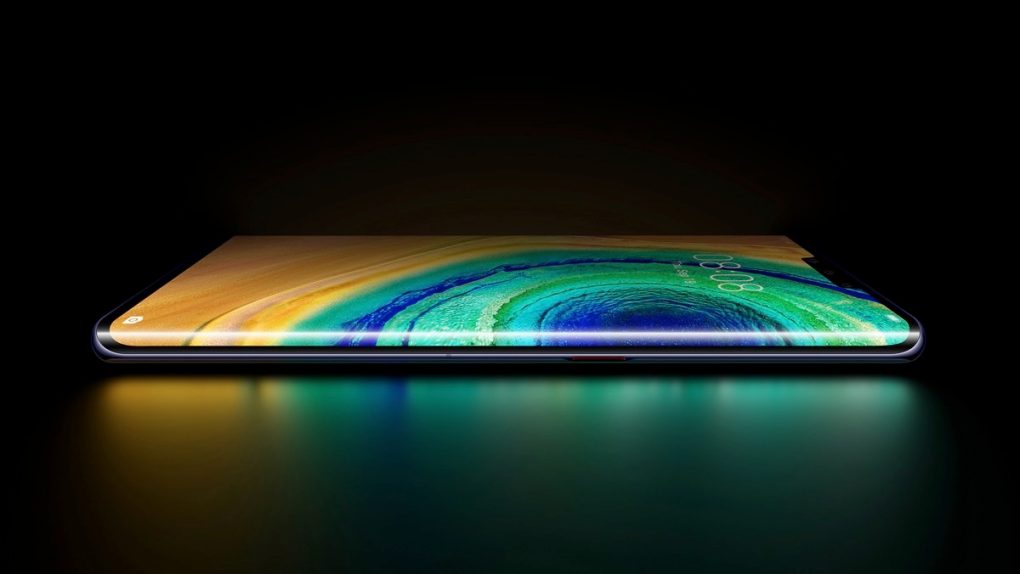Huawei on Thursday held a press conference in Munich, Germany to unveil its third flagship phone of the year — and it’s easily the most compelling one. Part of the Mate 30 series, the Mate 30 Pro is the best Huawei Android phone ever made, and it’s probably the best Android phones of the year. Or at least it would’ve been, if not for a major problem.
The successor of the Mate 20 Pro has quite a few interesting features, many of them not even available on competing devices, whether they’re iPhone or Android handsets. But unlike last year, the Mate 30 Pro has one massive drawback: it doesn’t come with Google’s Android apps built-in, and that’s all because of the ban the US imposed on the Chinese smartphone maker. In other words, even if you could purchase it in the US and Europe, you might not want to do it given that you’re not going to get the Android experience you expect.
All the Mate 30 series leaks we saw this week were accurate. We knew before the event what the phone would look like and what sort of specs it would deliver, and Huawei confirmed everything, further exploring the unique characteristics of the phone during the presentation.
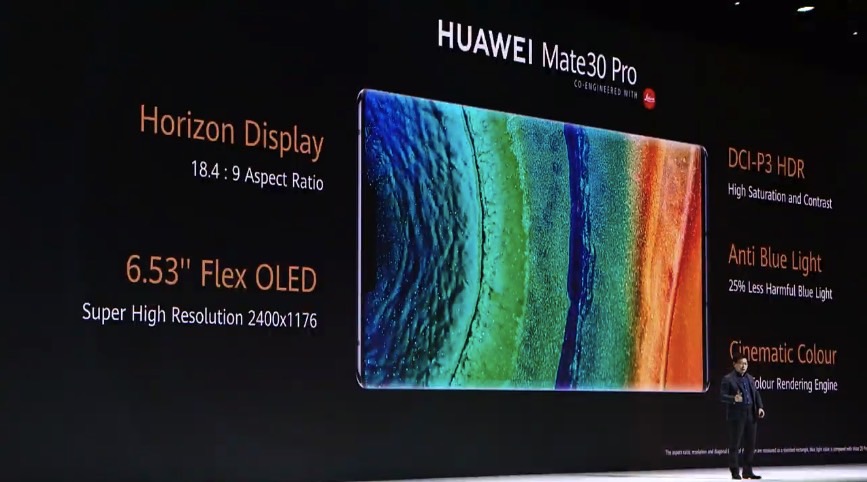
The Mate 30 Pro and Mate 30 will share many core specs, although it’s the former that will get all the praise.
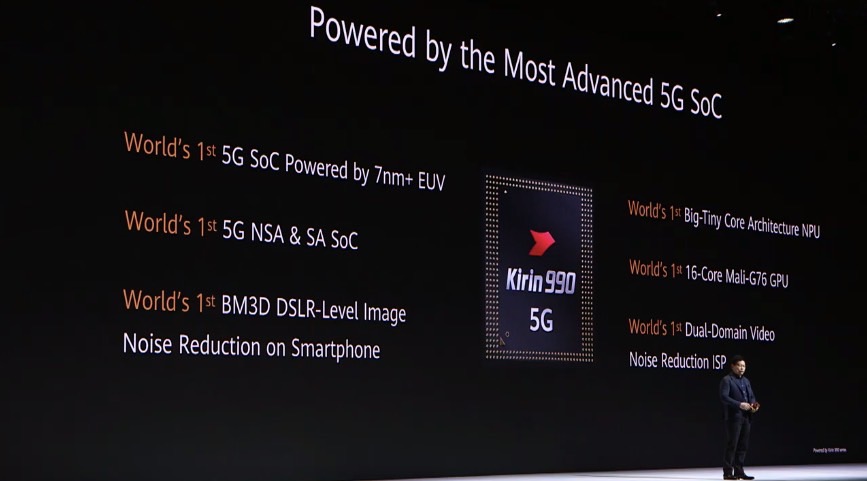
The Mate 30 Pro features a curved screen similar to the Mate 20 Pro and the Galaxy Note 10. But Huawei has been bolder than Samsung, giving its new phone more extreme curvature — that’s the “Horizon Display” with its 88-degree angle on the edges. For that reason, we only have one physical button on the phone for power, with the volume rockers being of the digital variety. Not only that, but you can adjust the volume on both sides of the phone. Moreover, the edge display also works as a camera shutter, which goes to show that you can do plenty of things with a design like this.
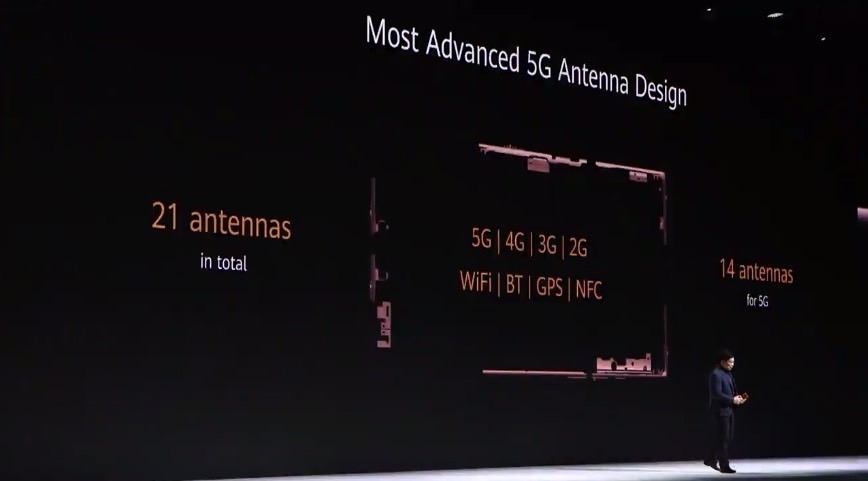
Powering the Mate 30 Series is the Kirin 990 chip that’s supposed to be even faster and more efficient than its predecessor. Also, it’s the first System-on-Chip to come with an embedded 5G processor. Add to that some 21 antennas, of which 14 handle 5G signal over multiple 5G bands, and you get 5G speeds of up to 1.5Gbps in real-life tests. That’s 50% higher than the Note 10. The phone can support two 5G SIM cards simultaneously, which is also a first for the industry.
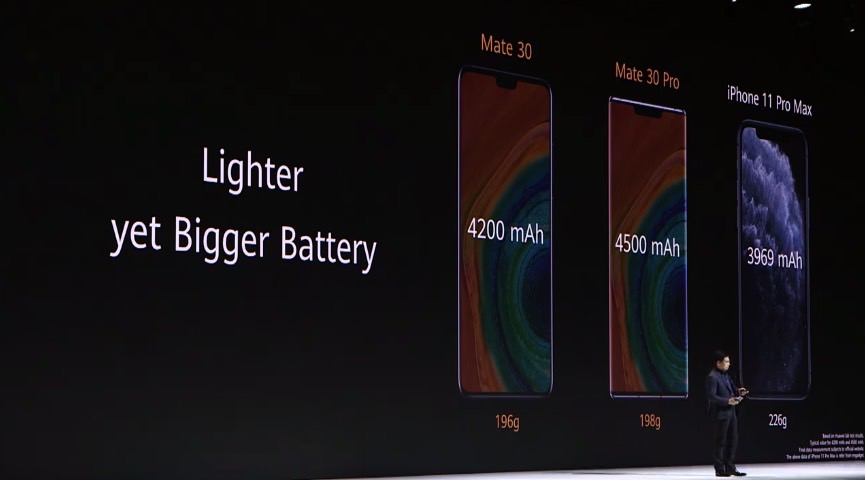
Battery life will not have to suffer from 5G, with the Mate 30 Pro supposed to last more than 8 hours when used on 5G, which is 2 hours longer than the Note 10. The Mate 30 Pro packs a 4,500 mAh battery that should be lighter than competitors. The battery also supports 40W wired charging and 27W wireless charging.
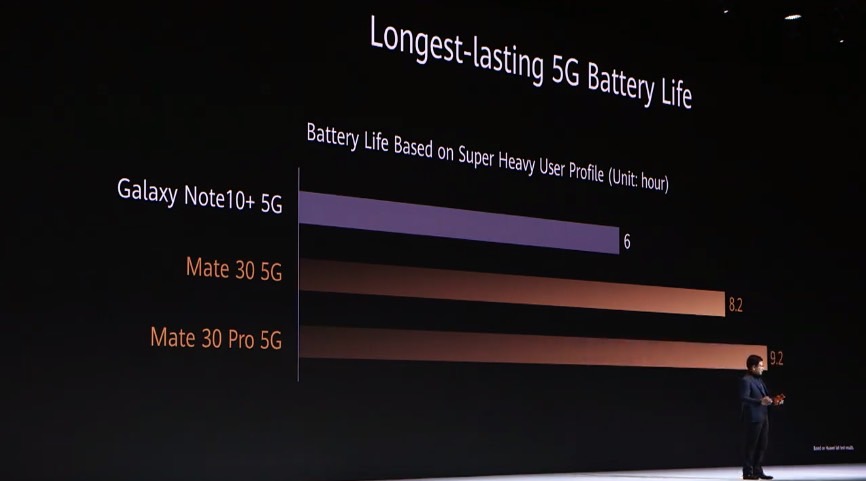
On top of that, the Mate 30 Pro will easily stand out for its upgraded camera system that features four lenses on the back, as well as additional camera modes that outperform the competition, according to Huawei. We’re looking at improved night mode, up to 45x zoom, ultra slow-motion video recording (7,680 fps), and 4K Low-light Ultra-wide time-lapse video, to name just a few. Pulling it all together is a Leica-branded quad-camera placed in a round module on the back, featuring a 40-megapixel Cine Camera, 40-megapixel SuperSensing Camera, 8-megapixel Telephoto camera, and 3D depth-sensing camera.
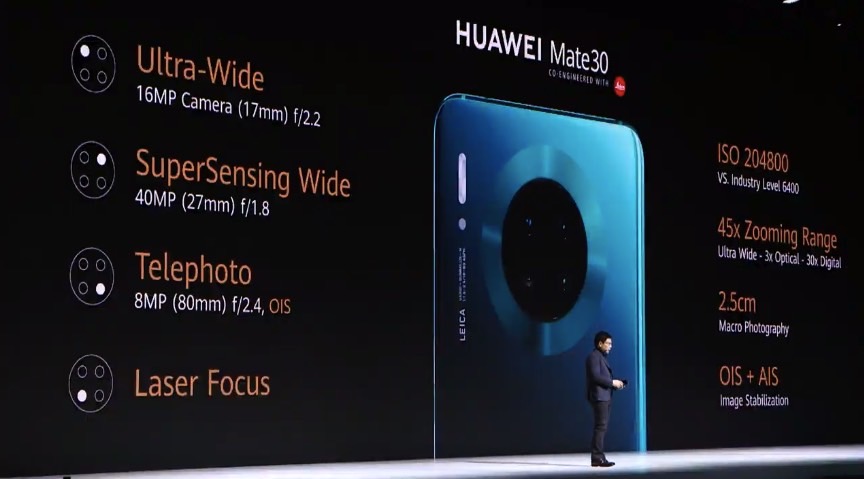
On the front, there’s a 32-megapixel selfie camera as well as a more sophisticated 3D face recognition system that’s smaller than last year’s, though it’s only on the Mate 30 Pro. The phones also pack an in-screen fingerprint sensor.
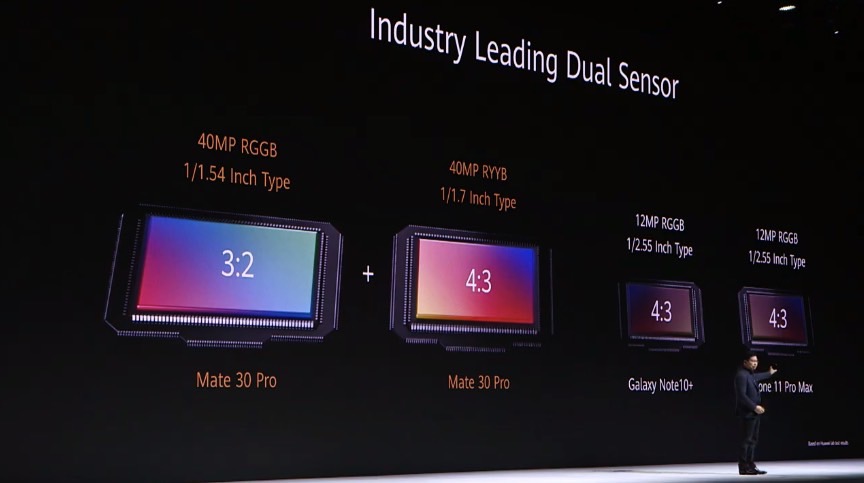
The biggest problem surrounding the Mate 30 series concerns software. The phones may run EMUI 10 based on Android 10, but Google apps are nowhere to be found — including the Google Play store. That was clear from the moment Huawei showed its own App Gallery store during the presentation. Or when it failed to mention Android by name anywhere in the press release.
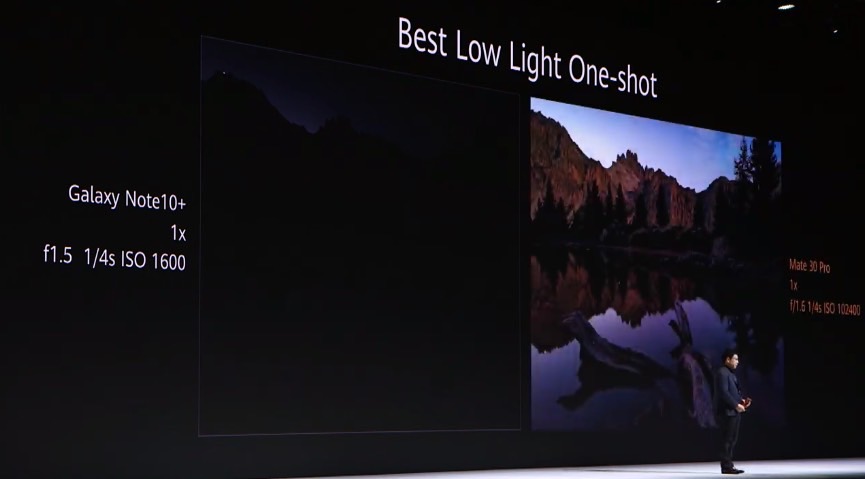
EMUI 10 comes with several features including always-on-display tech, dark mode support for the OS and apps, side-touch interaction, AI gesture control, HiCar smart travel, and multi-screen collaboration that’s basically Huawei’s version of Samsung DeX. In an unexpected move, Huawei’s Richard Yu confirmed that the ban forced Huawei to find other ways to bring apps to its mobile devices, with the exec introducing at the event Huawei’s Mobile Services ecosystem, complete with SDKs and an app store that should convince developers to adapt their apps for usage on Huawei’s version of open-source Android. The company is also investing $1 billion to help developers bring their apps to the App Gallery store.
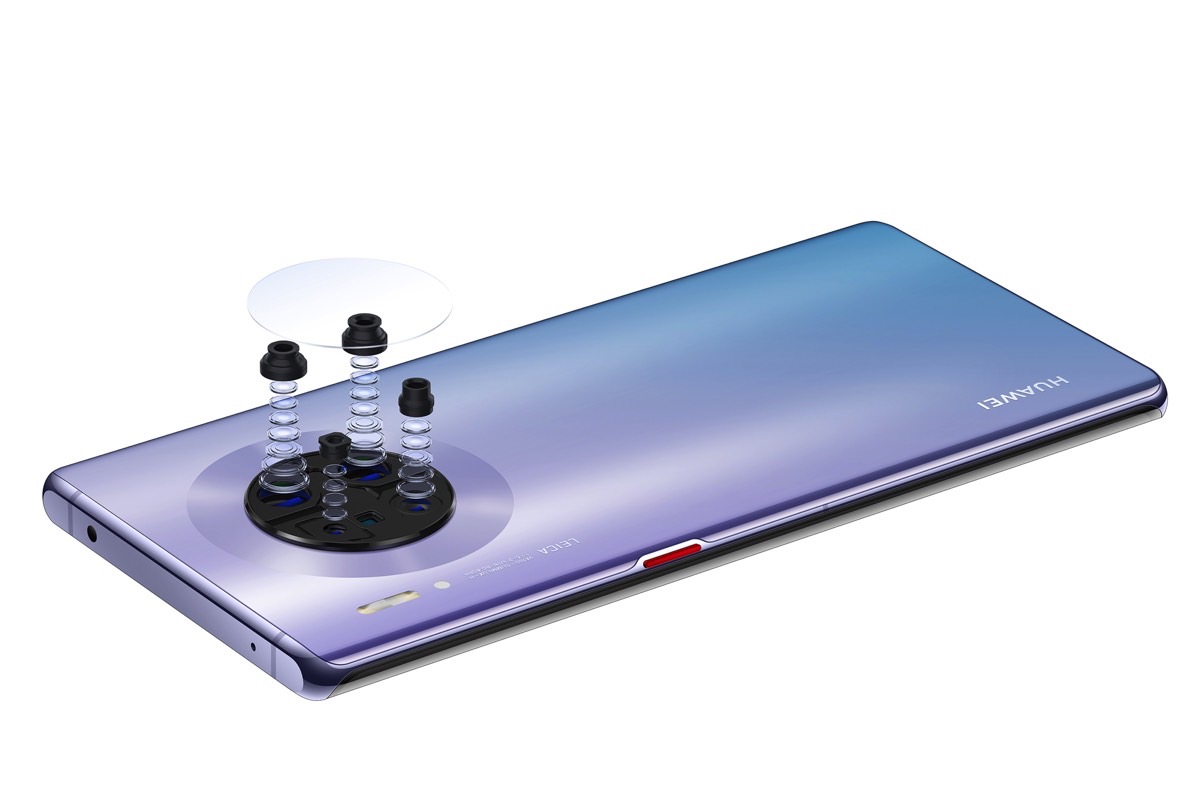
The company also highlighted the various privacy and security features built into the phone, including support for 3D Face Unlock and in-screen fingerprint for improved security, end-to-end cloud data backup, and Face-protected messages.
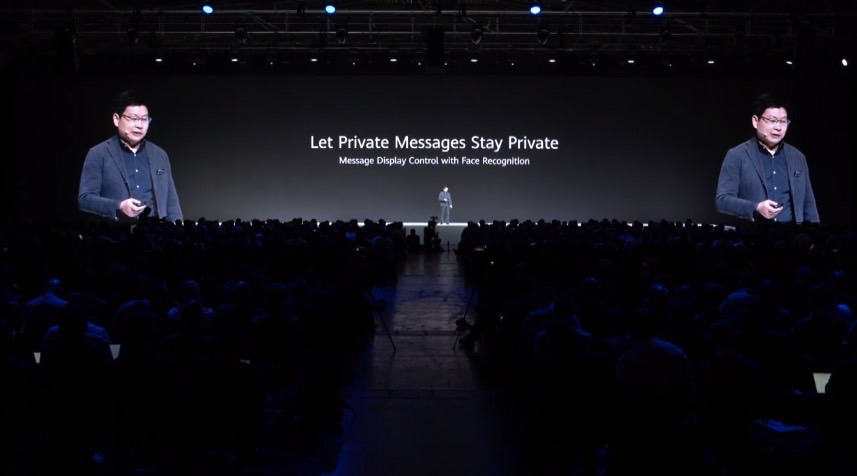
No matter how impressive the hardware is, the Mate 30 Pro will only be as good as its software. Without Google apps, purchasing a Mate 30 Pro makes little sense in western markets unless you don’t care about operating systems in the first place.
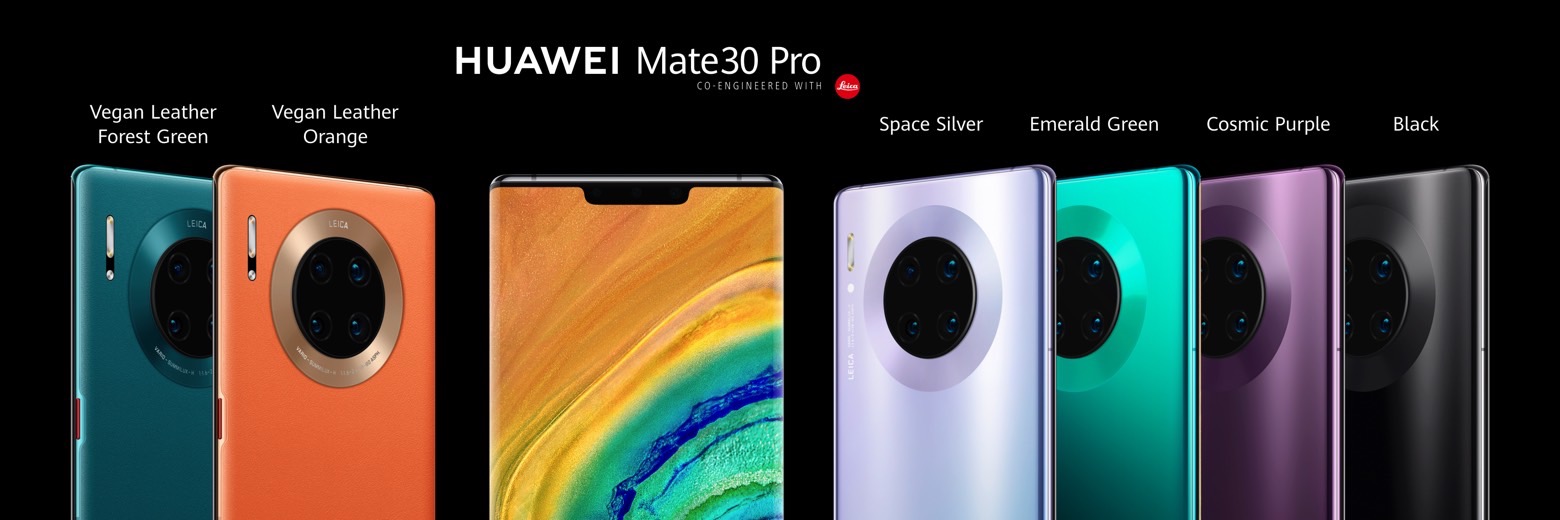
The Mate 30 and Mate 30 Pro will each be available in six colors, including Emerald Green, Space Silver, Cosmic Purple, Black, Forest Green (vegan leather) and Orange (vegan leather). Pricing has been announced for Europe, implying the phone will be sold in the region in spite of not running Google apps out of the box. Here’s what you’re looking at:
- 8GB/128GB Mate 30 4G – €799 ($884)
- 8GB/256GB Mate 30 Pro 4G – €1,099 ($1,216)
- 8GB/256GB Mate 30 Pro 5G – €1,199 ($1,327)
- 12GB/512GB Porsche Design Mate 30 RS – €2,095 ($2,318)
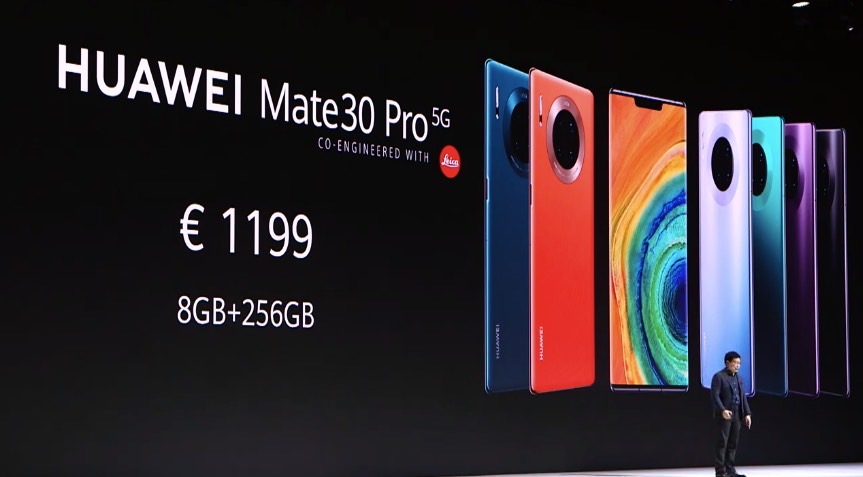
Actual launch dates should follow soon.
